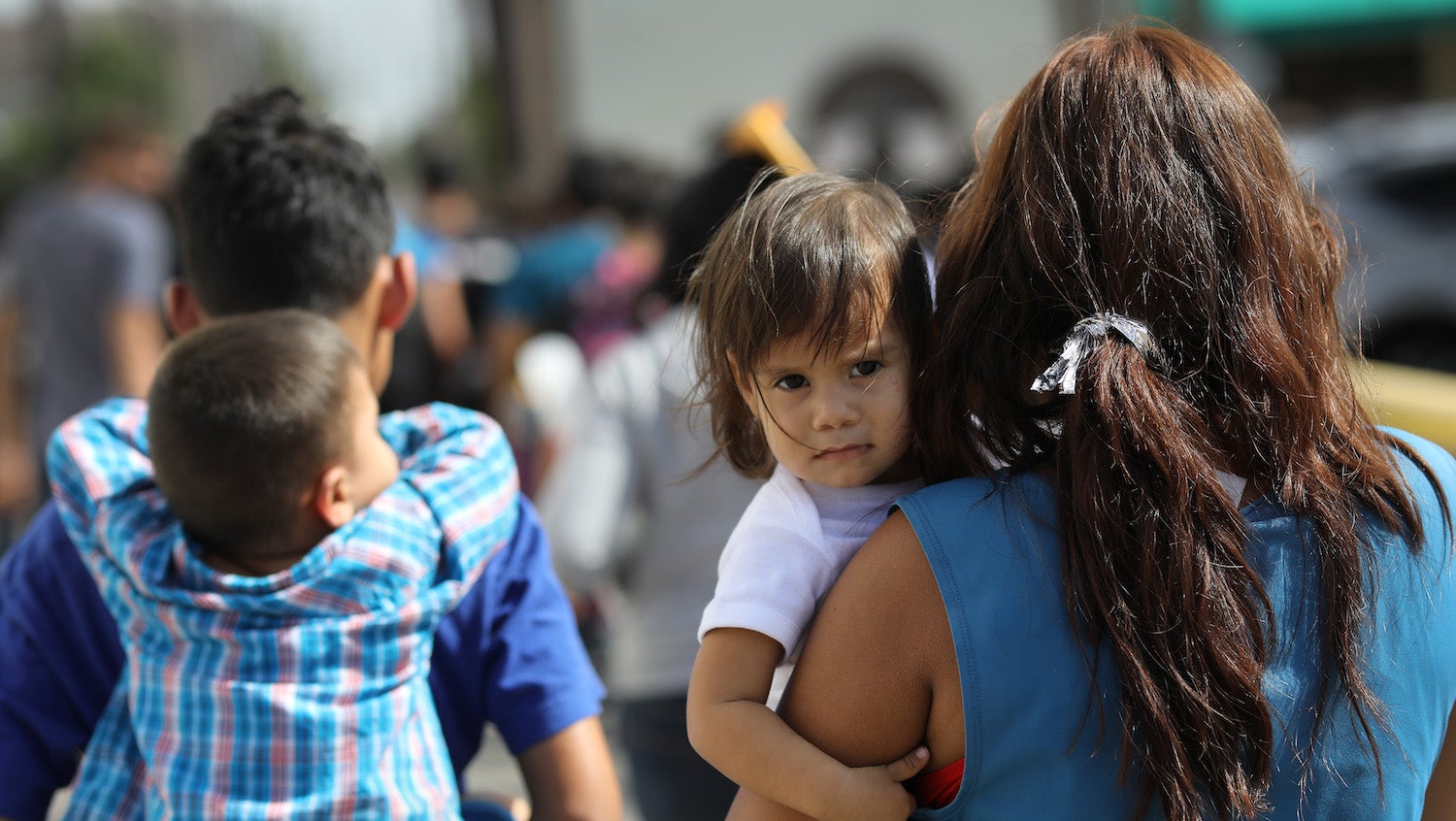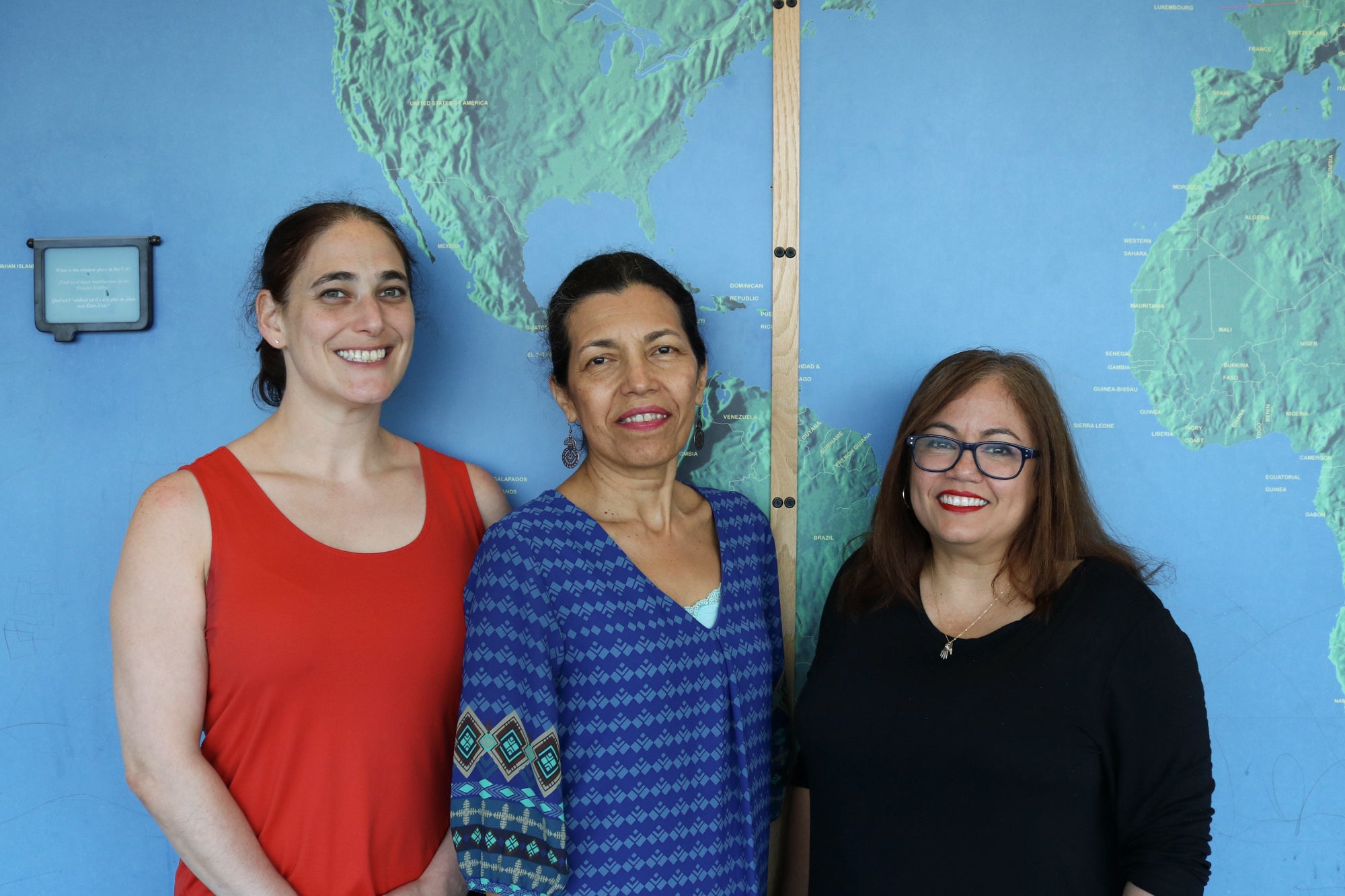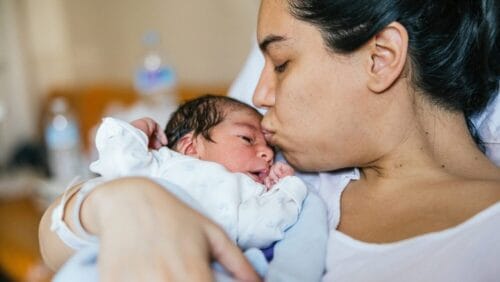Family Separation Plans Help Prepare Immigrant Patients for the Unthinkable
August 15, 2019

Getty Images
A team of experts creates resources for healthcare providers on addressing the fear and trauma of family separation among immigrant families.
Attachment and relationships are crucial for a child’s brain and emotional development. There is a body of evidence supporting the notion that one of the worst possible traumatic events that can happen to a young child is sudden, forceful separation from a primary caregiver. It can have immediate negative effects on their functioning as well as long-term consequences.
As immigration raids increase in the U.S. and a recently announced “public charge” policy change restricts which immigrants can apply for green cards and citizenship, undocumented parents and mixed-immigration status families are facing the unsettling question of how to plan for their children’s care and wellbeing in the case of forced separation.
Children, even at a young age, can sense the changes and fear the implications for their families, reports Ivys Fernández-Pastrana, JD, the family navigation program manager for Boston Medical Center (BMC)’s pediatrics department. Children of immigrant parents may ask their parents about a future where they might be separated, and they may experience physical manifestations of fear, such as stomachaches. When families turn to providers for help in alleviating these anxieties or finding answers, though, they’ve often left empty-handed.
“A mom asked me, ‘Would you stay with our child if la migra takes us? I don’t want her to end up in foster care,’” recalls Carmen Rosa Noroña, LCSW, social worker and clinical services and training lead for BMC’s Child Witness to Violence Project. Noroña’s patient, a 4-year-old girl, was a member of a mixed-status family who had been forced into the shadows for fear of being separated. “As a therapist, it was a very sobering moment. The best I could offer was to begin thinking and speaking about the ‘unspeakable,’ which was planning for who should care for their child in the event of detainment or deportation.”
At the time, there were few resources available to help families prepare for such a situation, Noroña discovered, which sent her on the path to build comprehensive supporting information.
To assist the mixed-status families they serve, Noroña and Fernández-Pastrana collaborated with Kara Hurvitz, JD, MSW, legal advisor at MLPB (formerly known as Medical Legal Partnership Boston), to create a resource that helps families in the event of an emergency separation.
“Most of the parents we see here are raising U.S. citizens who are being raised with a lot of trauma that their peers are not. The burden they carry is incredible,” says Fernández-Pastrana. “It’s almost like we have two kinds of citizens in this country. We have a duty to those children.”
Implementing a plan in case of deportation or detainment
The resulting Family Preparedness Plan details how to designate a caregiver for a child, what documentation to have available in case of separation, and how to talk to young children about separation. It also provides forms to document a child’s medical and educational needs, as well as the child’s routines. It helps families develop a reunification plan, making space for the understanding that the trauma of separation can have lasting effects on a child’s behavior and functioning.
The plan is freely available for any healthcare or social service provider to use.

Left to right: Kara Hurvitz, Carmen Rosa Noroña, and Ivys Fernández-Pastrana. (Nilagia McCoy)
Providers interested in using the plan should also be sure to use the accompanying facilitator’s guide, which lends guidance on appropriate support and facilitation, as well as sensitivity in addressing a disconcerting subject.
“You have to actively work with the family,” says Hurvitz, who explains that sending a family to complete the plan on their own has the potential to be really damaging.
The preparedness plan is particularly valuable for providers who do home visits and work closely with families but who may or may not have received training to approach these issues.
“Having more tools in the toolbox really does help providers in a lot of contexts. It gives them a starting place,” says Hurvitz. A social worker on Noroña’s team was able to use the plan to help a mother secure a passport for her child, and providers are using the resource at other Massachusetts organizations. The BMC team encourages providers across the country to use the plan and adapt it to incorporate their own state laws.
“There are things these families cannot change, like immigration policies,” says Fernández-Pastrana, “but at least in a plan like this they can take agency in the little things that they can control, and that’s powerful.”
How to confront a difficult topic
Immigration is complicated and overwhelming, and what is happening is so visceral, says Fernández-Pastrana. Providers can feel discouraged even before starting to have a conversation because training and support in this area are often lacking.
The interest in increased training focused on immigration was evident at an August 13 symposium held by BMC and the Boston University Center for Innovation in Social Work & Health. Attended by more than 100 social workers, community health workers, patient navigators, nurses, and doctors, the training covered the current immigration landscape and policies, considerations for working with immigrant populations, trauma-informed care, and how to help patients use the preparedness plan and other resources.

Carmen Rosa Noroña, left, and Sondra Crosby, MD, professor of medicine at BU School of Medicine, right, discuss the impact of child separation and share tips for working with immigrant patients at a BMC/CISWH training for social workers, patient navigators, and community health workers in August 2019. (Nilagia McCoy)
Noroña emphasizes the need for healthcare organizations to provide support to staff who serve populations affected by immigration policy, as confronting these issues can take a toll on a provider’s wellbeing, hope, and sense of agency and cause secondary traumatic stress.
Although the situation for undocumented immigrants is daunting, Noroña encourages healthcare professionals to form alliances to provide support for their clients and each other — and to face difficult conversations head-on. “You might think, I am not going to ask about immigration or trauma because I don’t know what to do, or I will feel overwhelmed,” Noroña says. But she asks providers to think about it from a relationship perspective: “Validating that what these families are experiencing is not okay, or that what they are experiencing is overwhelming — that is something you can do.”
Symposium presentations
- Immigration Status and Health: How You Can Support People in the Current Policy Landscape (August 13, 2019 presentation, PDF)
- The Border Is Here: Supporting Immigrant Patients, Families, and the Providers Supporting Them (August 13, 2019 presentation, PDF)
- Meeting the Needs of Immigrant Patients: BMC Policies, Advocacy, and Resources (August 13, 2019 presentation, PDF)
Additional resources
- CASA: Know Your Rights: Protect Yourself and Your Family During Immigration Raids
- Massachusetts Immigrant and Refugee Advocacy Coalition resources
- National Child Traumatic Stress Network: Resources Related to Traumatic Separation and Refugee and Immigrant Trauma
- Irving Harris Foundation Professional Development Network: Diversity-Informed Tenets for Work With Infants, Children, and Families
This article is part of a series from the Boston University Center for Innovation in Social Work & Health (CISWH) that highlights social workers working in healthcare and public health to address the nonmedical factors that impact health, known as social determinants of health. Know of a healthcare team that’s doing innovative work involving social workers? Contact us — we want to hear your story.


